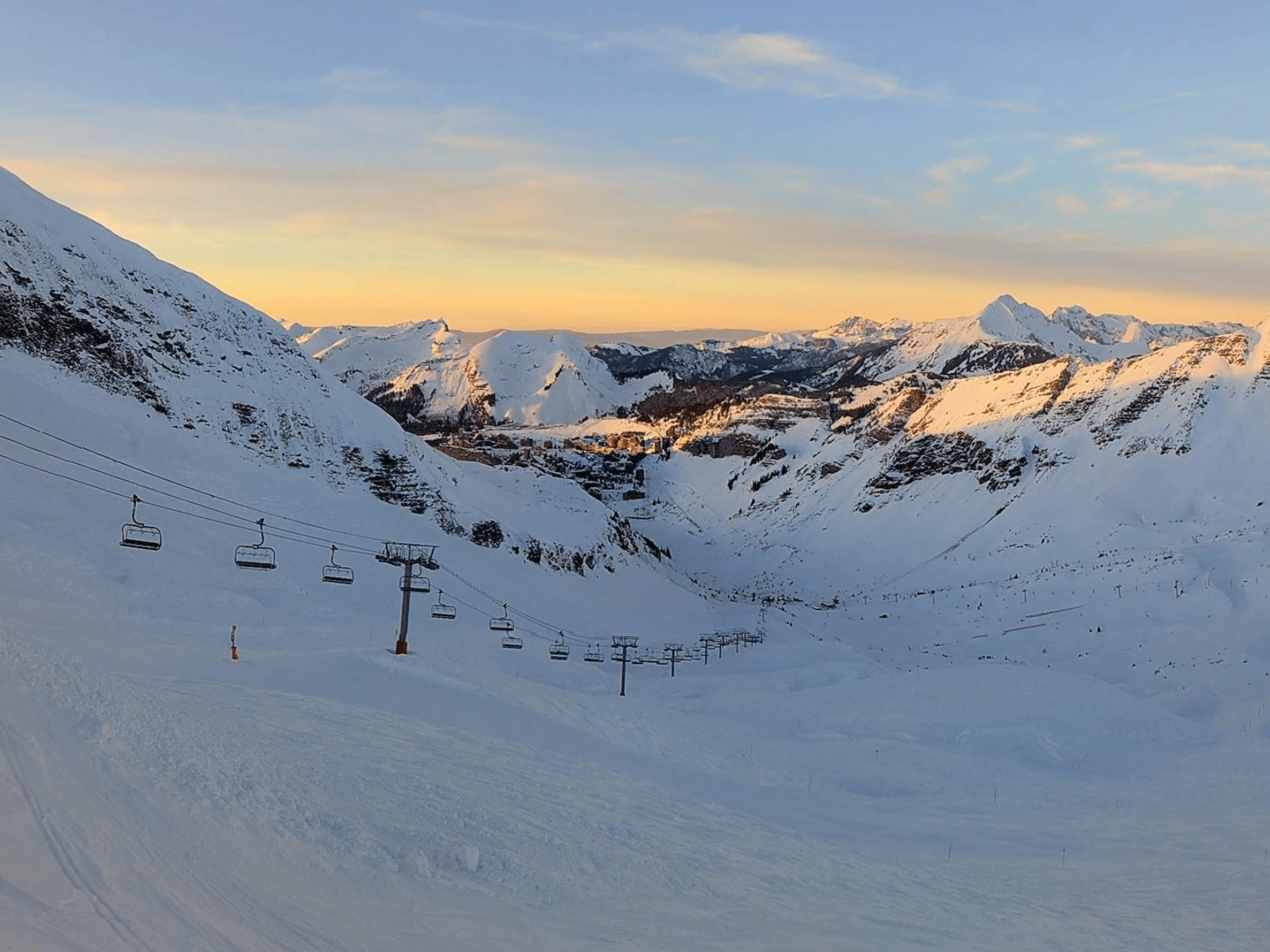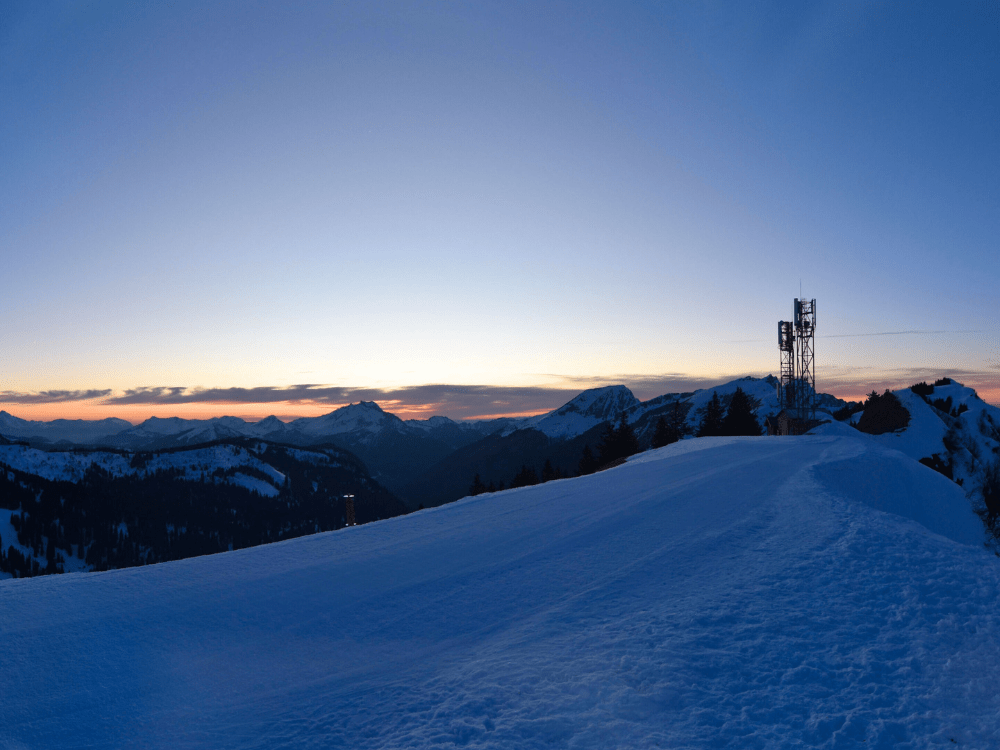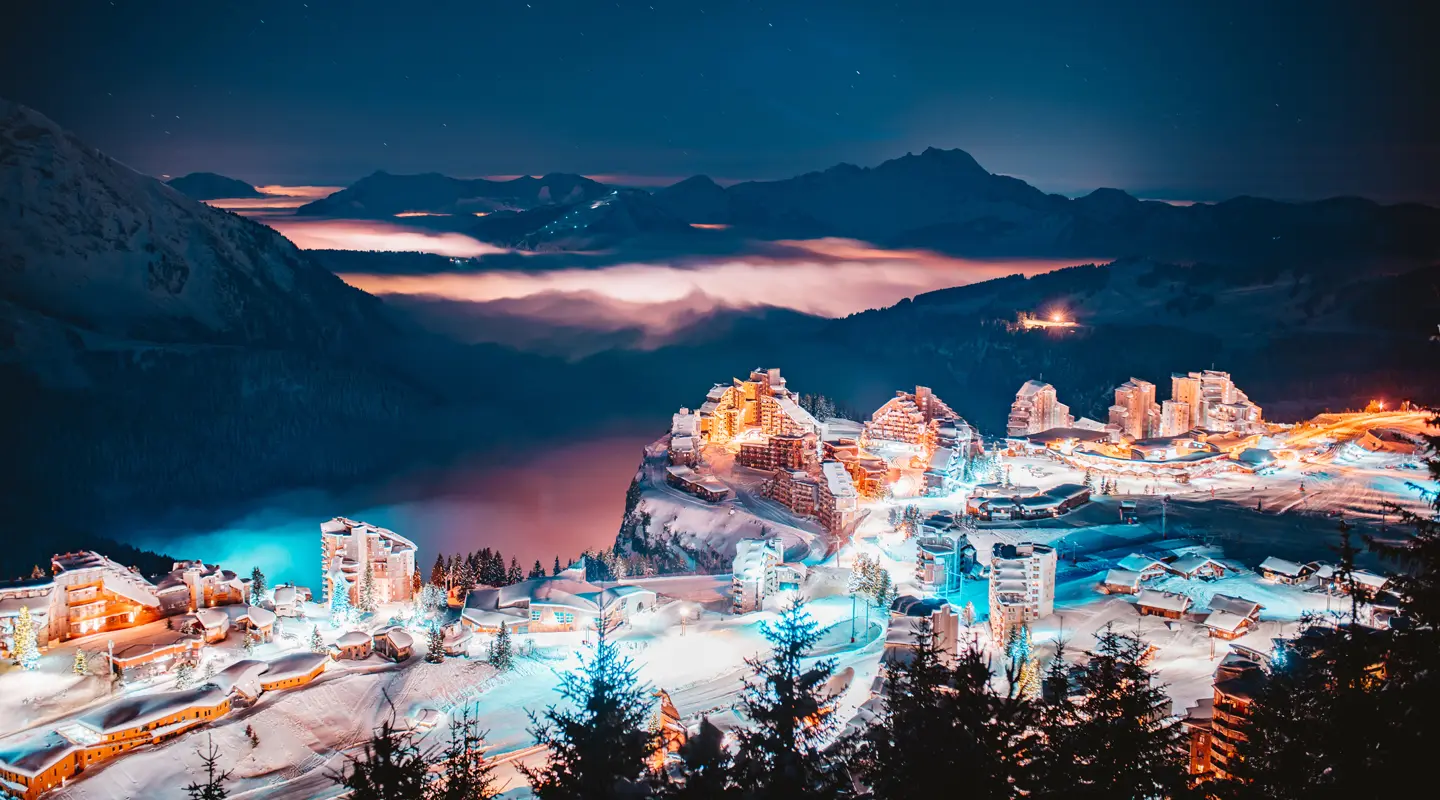

AVORIAZ 1800 HISTORY
Avoriaz 1800
The wonderland
Since its creation in 1966, Avoriaz 1800 has always been ahead of its time, adopting a responsible approach to mountain tourism.
The plateau on which the resort is built used to belong to an illustrious family of the Chablais region, the counts of Rovorée. After becoming the property of the village of Morzine, the Alpine pastures were known as the « Rovorée » land and, over time, the variations in pronunciation gradually changed the name to « Avorée », then « Avoréaz », before the name we use today, Avoriaz, was finally adopted (the « z » is silent).
At the time, this very dry and unfertile plateau was home to just a few chalets occupied by herdsmen who led their animals up the mountain every spring and went back down to the valley in autumn.
A vision: Jean Vuarnet.
On 22nd February 1960, a resident of Morzine, a certain Jean Vuarnet became the downhill skiing World Champion and Olympic Champion in Squaw Valley. A great end to the career of this 27 year-old athlete and inventor of the so-called egg position, after his unprecedented work on aerodynamism.
Jean Vuarnet returned to Morzine and, with all the determination of a visionary prepared to move mountains, went to work on fulfilling his dream. During that period of the French « 30 Glorieuses », it seemed crazy to even imagine a resort like no other that would take the bold step of banning cars and letting skiers take over the centre-resort.
Yet, 50 years on, this break from tradition still makes Avoriaz 1800 a world-class benchmark resort even today, demonstrating just how perfect the harmony was between the vision, the location and the strong values expressed here.
With the help of Morzine’s local council and various financial contributors, the project emerged. The first ski lifts began to operate, but Jean Vuarnet quickly found that funds were lacking and bankruptcy seemed inevitable.
Then came a timely encounter with Robert Brémond, who provided professional expertise in real estate as well as the funding needed to pursue the Avoriaz 1800 dream. The Prodains cable car was inaugurated in March 1963.
A challenge: Gérard Brémond
Aged 27, Gérard Brémond was a jazz fan who wrote a column about John Coltrane’s first release. But in 1964, his father, Robert Brémond, a property promoter in Paris, tasked him with creating the resort of Avoriaz. The project was conceded to him by Jean Vuarnet in 1962.
His father once said to him, « The mountains are for the younger generation. If you’re interested, I’ll give you some money to create your own business and you can pay me back later. » Those words marked the beginning of an extraordinary architectural and human adventure in the property world.
He began by rejecting the proposed plans which he considered to be too traditional, too urban and lacking originality. He wanted something more audacious and wasn’t afraid of taking risks. So he gave carte blanche to a young, iconoclastic architect named Jacques Labro, who was later joined by Jean-Jacques Orzoni and Jean-Marc Roques.
Their revolutionary architectural expression broke away completely from the usual neo-urban architecture of that period. From them, he accepted plans that were not the most profitable and gave them free rein to put their project together without obstructing their creativity. The pyramid-shaped buildings that followed the principles of organic architecture meant that surface area would be lost, and the decision to place all the apartments on the south side of the buildings would lead to increased costs. These eccentric choices were to be the foundation of a sustainable resort comprised of eco-designed buildings.
The success of Avoriaz is built upon a series of totally crazy projects.
Architectural audacity: Jacques Labro
Jacques Labro won the Prix de Rome in 1961. He was 26 years old when he met Gérard Brémond. A little later, he met Jean-Jacques Orzoni and Jean-Marc Roques – his co-founders of the Atelier d’Architecture d’Avoriaz (AAA) – and through a brand new concept, designed the ideal recreational resort from scratch: 209,000 square metres for the construction of a vehicle-free resort in line with the vision of Jean Vuarnet.
The architects totally abandoned the usual geometric lines and, instead, played with the relief to position apartment blocks, chalets and amenities and intertwine them with skiable paths. Each building is unique in terms of both contour and volume, mimicking the curves and the scale of the natural relief in an expressionist approach that emphasises the surrounding scenery.
To Jacques Labro, this living architecture follows the « organic » architectural movement, in line with the ideas of Franck Lloyd Wright and Aval Aalto. It rejects the urban rigour, the neo-rusticism and other pre-existing designs and models built during the same period.
50 years on, Avoriaz remains a loyal pioneer when it comes to modernity in planning and architecture. The buildings are placed to fit the relief and to optimise sun exposure and the mountain views.













FANTASY FANTASY FILM FESTIVAL
Avoriaz 1800 has always attracted the media thanks to a whole host of original features but also to innovations in terms of public relations. Many stars were frequenting the resort, which was beginning to achieve world fame. But that wasn’t enough for Gérard Brémond, who wanted his resort to benefit from even greater media exposure. The promoter went to great efforts to quickly build the resort’s reputation, and the Fantasy Film Festival was born. Avoriaz became the first tourist destination to adopt an event-driven marketing strategy.
It was a risky move. In the early 1970s, fantasy filims were in their infancy and nothing suggested their potential or future success. But Gérard Brémond liked the idea and, as he had already demonstrated with Avoriaz 1800, he enjoyed innovating.
Like pioneers, his team went in search of quality films and spent 20 years viewing thousands of them from all over the world in the aim of finding some rare gems to screen before an increasingly large audience. Avoriaz 1800 struck lucky when, alongside three Italian films and four American productions, a young American filmmaker’s first creation was screened. With this « exceptional thriller » about a lorry that tries relentlessly to run a man over, the festival makes cinema history.
Steven Spielberg’s « Duel » won the festival’s Grand Prix. For the entire week of the festival, television channels competed fiercely to broadcast, live from Avoriaz, anything from variety shows to the news. Any excuse was good enough to move heavy technical equipment to 1,800 metres above sea level, not to mention the special guests who travelled all the way from Paris for the occasion.
OUTSTANDING LIST OF WINNERS, EXCEPTIONAL JURY
After « Duel » and Spielberg in 1973 came « Soylent Green » by Richard Fleischer and Brian de Palma’s « Phantom of the Paradise ». Other prizewinners include: David Lynch for « Elephant Man » and « Blue Velvet », George Miller for « Mad Max », James Cameron for « Terminator », and David Cronenberg for « Dead Ringers ». Avoriaz helped launch the career and spread the worldwide reputation of many of these filmmakers.
Some outstanding fantasy films have transcended their genre to join the cinematographic hall of fame. For the first time, the jury members are not all film directors. Indeed, authors (Alain Robbe-Grillet, Romain Gary, Françoise Sagan, Eugène Ionesco, Jorge Semprun…), and singers (Serge Gainsbourg, Johnny Hallyday, Henri Salvador, Léo Ferré, Julien Clerc, Georges Moustaki, Charles Aznavour, Jane Birkin…) sit alongside the producers (Michelangelo Antonioni, Steven Spielberg, Brian De Palma, Agnès Varda, Claude Lelouch, René Clément…) and actors (Jeanne Moreau, Alain Delon, Michael Lonsdale, Thierry Lhermitte, Jean Rochefort, Pierre Richard, Sophie Marceau…).











